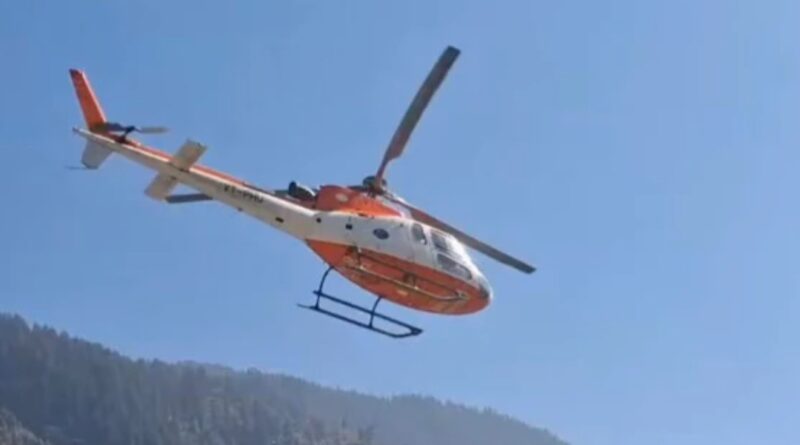Shimla to Manali Helicopter Service Takes Flight: A Winter Lifeline for Himachal’s Hill Communities
When roads vanish beneath blankets of snow and avalanches cut off entire valleys, what does a mountain community do? For residents of Himachal Pradesh, that question may soon have a promising answer soaring overhead.
A breakthrough trial flight recently connected Shimla’s Sanjauli helipad with Manali’s SASE helipad, bringing hope that scheduled helicopter services could soon transform how people navigate the state’s most challenging winter months. The test run, conducted under the government’s UDAN initiative—which stands for “Ude Desh Ka Aam Nagrik” or “Let the Common Citizen Fly”—used a single-engine AS 350 B3 helicopter to prove what many have long believed possible: that the skies might offer solutions when mountain roads cannot.
Why This Flight Matters Now
Representatives from tourism, police, medical services, and fire departments gathered at the Manali helipad to witness the trial, signaling the cross-sector importance of this development. Officials are optimistic that commercial operations could begin following necessary safety checks and operational approvals.
The timing couldn’t be more critical. As Himachal Pradesh approaches its harshest winter season, communities across the region brace for what has become an annual challenge. Heavy snowfall doesn’t just slow travel—it stops it entirely. The highways connecting Shimla, Kullu, and Manali regularly become impassable battlegrounds where avalanches, landslides, treacherous black ice, and relentless storms claim weeks of connectivity at a time.
For locals and visitors caught in these weather patterns, the consequences range from inconvenient to life-threatening. Medical emergencies become exponentially more dangerous when ambulances can’t reach hospitals. Rescue teams struggle to deploy when disaster strikes. Essential supplies dwindle. Tourists find themselves stranded, and the families who depend on tourism income watch their livelihoods freeze along with the roads.
A Lifeline Above the Snowline
Helicopter connectivity isn’t just about convenience—it’s about survival and stability. When operational, this aerial link could fundamentally change winter reality in several ways:
Emergency medical evacuations could happen within hours instead of being delayed for days or deemed impossible. Trauma patients would have fighting chances they currently lack when roads close. Rescue operations during avalanches or other weather-related disasters could deploy immediately rather than waiting for ground access. Critical supplies—medicines, food, heating fuel—could reach isolated communities even when surface transport fails. Residents and tourists would have a reliable escape route when weather conditions deteriorate suddenly.
For an economy heavily dependent on tourism, reliable winter access means hotels can stay open, ski resorts remain viable, and local businesses don’t face the existential uncertainty that comes with each forecast of heavy snow.
Building Sky Bridges Through the Mountains
The UDAN scheme recognizes a simple truth: not every region can build airports, especially in ecologically sensitive mountain terrain. Himachal Pradesh’s dramatic topography makes traditional airport infrastructure both prohibitively expensive and environmentally problematic in many areas. Helicopter networks offer an alternative that works with the landscape rather than against it.
This Shimla-Manali trial represents just the beginning of what officials envision as a broader aerial network. The goal is connecting high-altitude districts, tourist destinations, and medical facilities across the state through short-hop helicopter routes that turn hours-long journeys into minutes-long flights.
Expansion plans already include some of Himachal’s most isolated regions: Lahaul-Spiti, Pangi, Kinnaur, and Bharmour—areas that routinely face weeks of complete isolation during peak winter. For communities in these valleys, helicopter access could mean the difference between connection and abandonment.
Beyond Transport: A Regional Transformation
The ripple effects of reliable aerial connectivity extend into multiple aspects of regional life. Tourism operators could finally market Himachal as a truly year-round destination rather than hoping visitors take their chances with winter weather. Travelers would gain peace of mind knowing they won’t be stranded indefinitely if a storm rolls in.
Healthcare access would improve dramatically for mountain residents who currently face agonizing choices during medical emergencies when roads are blocked. Economic activity wouldn’t need to hibernate each winter—businesses could maintain operations and employment even during seasonal road closures. Emergency response capabilities would expand significantly, with relief teams able to reach disaster zones regardless of ground conditions.
The Road—or Rather, Flight—Ahead
Following this successful trial, authorities will now conduct technical assessments, safety audits, and develop scheduling frameworks before regular commercial operations begin. Fare structures and service frequency will be determined through consultations with stakeholders, balancing affordability with operational sustainability.
The challenge will be making these services accessible enough that ordinary residents—not just wealthy tourists—can benefit during genuine emergencies or critical travel needs. That’s the core promise of the UDAN scheme: democratizing air travel for regions where geography makes it not a luxury but a necessity.
For the people of Himachal Pradesh, this trial flight represents more than an aviation milestone. It’s a potential lifeline hovering on the horizon—one that promises safer winters, protected livelihoods, and the knowledge that when the mountains become impassable, help can still arrive from above.
As climate patterns grow more unpredictable and extreme weather events more frequent, such alternative connectivity solutions may prove essential not just for comfort, but for the very viability of high-altitude communities. The skies above Shimla and Manali may soon carry more than clouds—they may carry hope for thousands who call these mountains home.



